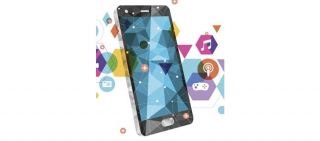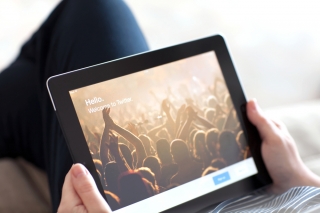MOBILE PHONES ARE REPLACING BANK ACCOUNTS IN AFRICA
It doesn’t look like the hub of an online bank. But that’s what the yellow and blue metal kiosk becomes when Albert Agane locks himself behind the metal bars every day at 6am.
From his perch along a dusty suburban thoroughfare in Accra, the 28-year-old helps fellow Ghanaians withdraw or deposit cash for accounts they operate from their mobile phones. All they need do is text.
Mobile money is the fastest-growing source of income for wireless-network operators like MTN and Vodafone’s Safaricom unit, outpacing data since many Africans don’t have the latest smartphones. They need agents like Agane because ATMs and bank branches are out of reach, or too costly. “In a village, where there are no banks, you can go to an agent and transact,” said Agane, who earns a commission of about 1% for moving as much as 20 000 cedis ($3 700) a day.
“Once people have phones there’s no need for a bank account.”The service has become an indispensable part of how Africa’s 1.2 billion people live, from buying funeral cover to borrowing money. The number of registered users in Ghana soared 11-fold between 2013 and 2017, International Monetary Fund data shows. Across the continent in Kenya, where it was pioneered, the value of such transactions amounts to almost half of gross domestic product, according to the World Bank.Sub-Saharan Africa has more mobile-money accounts than anywhere else in the world with about 396 million registered users at the end of 2018, a 14% increase from a year earlier, according to the GSM Association.
As it catches on around the world, South Asia saw 29% growth in 2018, and it was 38% for East Asia and the Pacific.“There are a lot of partnership opportunities with immense revenue potential for both mobile-network operators and banks,” said Patrick Quantson, head of digital transformation at the Accra-based unit of Standard Bank, Africa’s largest lender. “The mass appeal of mobile-money services and the mode of delivery also presents an opportunity to scale financial products to all market segments, at incredibly lower costs.”
It’s easy to see why Agane-one of 182 000 mobile-money agents-is busier than the ATMs around Ghana’s capital city. There are more than 1 740 such outlets per 100 000 people in the country, compared with only 11.7 ATMs and 8.7 bank branches, the IMF data show. “We’ve seen that people in the informal sector, who would have kept their money under pillows, move into mobile money,” said Eli Hini, general manager for mobile financial services at MTN Ghana, which controls about 78% of the active-customer market.
“Now, when there are floods people don’t lose their money. They’d rather get interest paid on it.” Banks don’t lose out because the mobile-phone companies park deposits with them, giving them cheaper access to funding.MTN and Sanlam, Africa’s largest insurer, last month announced that the continent’s biggest wireless network operator will offer funeral and other life-cover products through its digital channels spanning 237 million subscribers in 21 markets. Vodafone’s Johannesburg-based Vodacom Group last year bought a stake in Safaricom, based in Nairobi, from its parent to gain access to its M-Pesa money-transfer service, helping to double earnings from financial services. Vodacom last year made 11 billion transactions worth R2trn to 36 million customers.
The potential stretches to Nigeria, Ethiopia and Egypt, where reforms could add 110 million mobile-money accounts in the next five years, the GSM Association said in February. There’s more to come, said Martison Obeng-Agyei, who heads Vodafone Cash in Accra. There were about 31 million mobile-voice subscriptions in the country of 29 million people, and 12.1 million active mobile-money accounts at the end of 2017, from just 345 400 five years ago, Bank of Ghana data show.
“There’s huge prospects,” he said. “One of the things that was lacking in our financial system was the ability to move funds around. Businesses have been established because of mobile money.” While Agane hasn’t been robbed in his four years as an agent, he stays alert. A company comes around to exchange hard cash for electronic money to lower the chances of being targeted, like a vendor Agane heard of across town, who was attacked with a cutlass.
“There are so many risks,” he said, especially with the kiosk open until 9pm. “But there’s no jobs. If you don’t do it, there will be no food on your table.”
Source: https://www.fin24.com/Companies/ICT/mobile-phones-are-replacing-bank-accounts-in-africa-20190813
TECNO CAMON 11 AI camera
The art of photography is one of the most pivotal aspects of today’s Pop culture and photography with the help of cutting-edge technology, has transcended from involving heavy duty equipment that can be transported easily to portable, lightweight tech devices known as smartphones. TECNO Mobile, knowing how photo centric this current generation is and how smartphone users continually search for a smartphone with utterly exceptional cameras has recently announced a flagship device from its CAMON series that beats an industrial
benchmark.CAMON 11: New devices with the power to capture more beauty.
CAMON 11 adequately address any smartphone camera related grievance users could have, as the CAMON 11 comes with a 16MP selfie shooter and dual rear camera setup (13MP+2MP) that are synchronized with Artificial Intelligence which automatically recognizes user’s environment within seconds and adds various light shades in a bid to pick the best suitable settings for a high-quality image.
It doesn’t end there, the new CAMON devices tracks 240 facial points in real time to properly replicate the user’s facial features and transform them into top notch pictures. This is a big deal as the industrial benchmark for most smartphone is 108, but the new CAMON 11 doubled that benchmark effortlessly- Great one from team TECNO.
Over the years, TECNO’s consistency in launching really good camera- centric smartphone is commendable as these new devices seems to have added more weight on an already flattering record. With the new CAMON 11, it is obvious that flawless selfies will never be a thing to yearn for, as they are easily attainable. The devices also parade an Artificial Intelligent beautification effect, an A.I HDR, A.I Adjustable flashlights and other modes affixed into the device as camera sub features to ensure users have several enticing options to keep taking amazing pictures.
Additionally, the new CAMON devices are not a slouch on other aspects that makes up an amazing device. The smartphones also showcase improved facial unlock feature which works more effectively, and users do not need to worry so much about keeping records as they can seamlessly record their phone calls by just tapping the fingerprint sensor which is placed behind the devices.
Other features to look out for on the new TECNO CAMON 11 includes a 6.2-inch notch screen + Super full view display, a 4G LTE connectivity, a 3750mAh Li-Polymer. The CAMON 11 carries a 3GB RAM+32GB ROM.
4 Things to Consider When Shopping For a Tablet
When shopping for anything these days, one needs to do extensive research on the benefits and features of the product. Purchasing an item solely based on its popularity can turn out to be rather disappointing at times. You’ve been using a smartphone and feel it’s time to tap into the tablet world but seem clueless on how to go about it. Worry not, we’ve put together this quick and easy tablet shopping guide to help you choose a tablet that will meet your needs.
- Purpose
One thing you need to determine before buying a tablet is what you will be using it for. Is it reading or do you need to constantly type? Tablets make great e-readers and children’s books are full of colours. You can easily read PDFs, comics and the list goes on. What’s extra awesome about tablets if you don’t need to type a lot they can handle more content than a two-year-old laptop would. You can get a keyboard as an accessory if you need to type often. Tablets also have more modern apps for you to enjoy. If you like games too, you are in luck. - Choosing an Operating System
Just like laptops, tablets come in different operating systems. You need to choose one which will cater best for your needs. You are even welcome to choose a different operating system from your personal or business laptop for a whole new experience. Apple’s iOS found on their iPad is clean and intuitive offering you more than a million iPad-specific apps you can buy right from your tablet.Google’s Android mobile OS gives you various hardware selection from different manufacturers with maximum configurability. Plus, you can share your tablet with someone in the family since Android supports multiple user logins. While Windows on the other hand offers you something close to a traditional computing experience similar to a PC or laptop. This is the best OS to use for work purposes since you’ll be able to run full versions of software like Microsoft Office on a Windows tablet. - Screen Size and Resolution
The size of a tablet and its storage capacity is quite important. The actual screen size of tablets measured diagonally range from 7-inch for a small screen to 10-inch for a large screen. This is a measurement of the screen size and not the size of the tablet. You will need a sharp, bright display especially for e-book reading and web surfing. Apple's 12.9-inch iPad Pro offers 2,732 X 2,048 pixels, the highest resolution you will find. While you can look for a display with at least 1,280-by-800 in a 10-inch Android tablet. - Storage and Price
Many tablets offer cloud (off- device) storage but more is better when coming to on-device storage. You can get iCloud for iPads or OneDrive for Windows. Tablets come in 16, 32 or 64GB memory variety. The highest storage you will find in the iPad Pro range offers 256GB of flash-based memory. Expect to pay anything close to the actual purchasing price for a windows based full-featured laptop for the iPad 9.7-inch Wi-Fi only or Wi-Fi and Cellular tablet ranging between R17 500 to R20 500 or even more.Preferably, make a list of the main uses for your tablet before heading out to get one. Whether it’s reading articles, using Photoshop or watching movies, choose the one that meets your specific individual needs. If you feel a laptop seems more practical for you at present, then you’ll want to check these laptops for sale.



